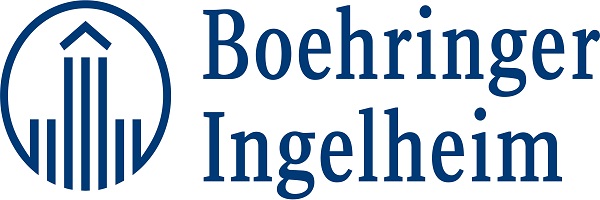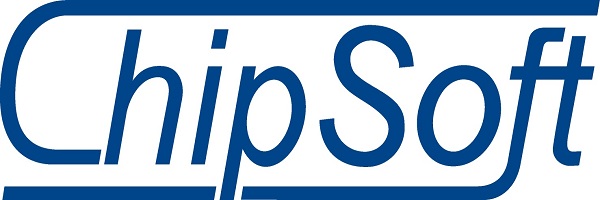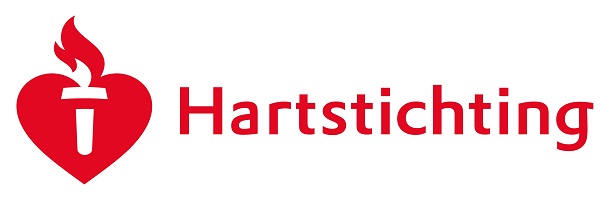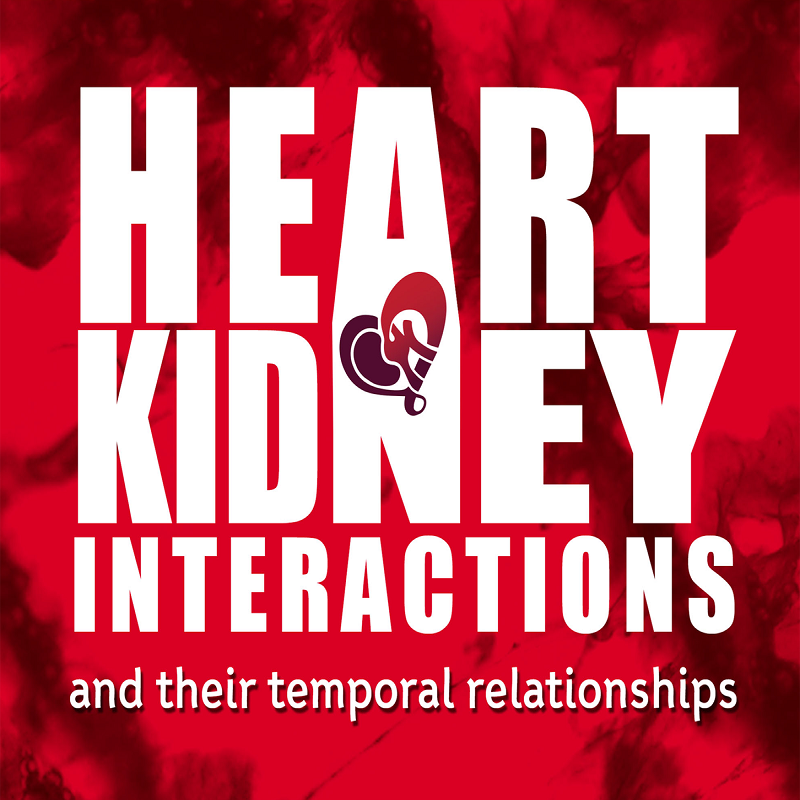
The heart–kidney interactions described in this thesis are based on our experience derived from clinical studies conducted among patients with heart failure (HF) and those with ischemic heart disease (IHD). The thesis describes heart–kidney interactions not only as the organs’ interplay assessed at a single moment in time as is commonly done, but also their temporal relationships over time preceding adverse clinical events. This is important to note because these temporal patterns have so far received insufficient attention, mainly due to the methodological limitations of previous studies. However, these patterns are inherently linked to the progression of the conditions that affect both the heart and the kidneys such as HF and atherosclerosis.
In medicine, repeated measures are frequently available (glomerular filtration rate or proteinuria) and linked to adverse outcomes. However, several features of these longitudinal data should be considered before making such inferences. These considerations are discussed and we describe how joint modeling of repeatedly measured and time-to-event data may help to assess disease dynamics and to derive personalized prognosis. Joint modeling combines linear mixed-effects models and Cox regression model to relate patient-specific trajectory to their prognosis. We describe several aspects of the relationship between time-varying markers and the endpoint of interest that are assessed with real examples to illustrate the aforementioned aspects of the longitudinal data provided. Thus, joint models are valuable statistical tools for study purposes, but also may help healthcare providers in making well-informed dynamic medical decisions.
Despite testing for statistical interactions is usually stated as the secondary study objectives, it is not uncommon that these results lead to changing of treatment protocols or even modify the public health policies. For this reason, statistical interactions are studied frequently in clinical studies, but recent reviews have indicated that their proper assessment and reporting remains challenging for the clinical investigators. This article provides an overview of the challenges associated with the statistical interaction analysis to help the clinical investigators finding the best strategy to properly obtain and critically evaluate its presence in statistical models. Specifically, we discuss the importance of understanding the distinction between effect-measure modification and causal interaction, their qualitative and quantitative forms, the importance of a measurement scale on which interactions are tested, additive and multiplicative interaction measures, the relevance of multiple testing, and distinction between prespecified versus post-hoc analyses. Finally, we provide the recommendations that, if adhered to, could increase the clarity and the completeness of future studies. The understanding of the elements underlying statistical interaction analysis followed by its proper assessment and reporting may help in making the results more reliable, but also in facilitating clinical studies to use this type of analysis even more in the future.
Background
Renal dysfunction is an important component of chronic heart failure (CHF), but its single assessment does not sufficiently reflect clinically silent progression of CHF prior to adverse clinical outcome. Therefore, we aimed to investigate temporal evolutions of glomerular and tubular markers in 263 stable CHF patients, and to determine if their patient-specific evolutions can dynamically predict clinical outcome.
Methods
We determined the risk of clinical outcome (composite endpoint of HF-hospitalization, cardiac death, LVAD-placement and heart transplantation) in relation to marker levels, slopes of their trajectories (increasing/decreasing patterns), and areas under their trajectories (AUCm). In each patient, the trajectories were estimated using repeatedly measured glomerular markers: creatinine/estimated glomerular filtration rate (eGFR), cystatin C (CysC); and tubular markers: urinary N-acetyl-beta-Dglucosaminidase (NAG) and kidney-injury-molecule (KIM)-1, plasma and urinary neutrophil-gelatinase-associated-lipocalin (NGAL).
Results
During 2.2 years of follow-up, we collected 8 (5–10) urine and 9 (5–10) plasma samples per patient. All glomerular markers predicted the endpoint (univariable hazard ratio [95% confidence interval] per 20% increase: creatinine: 1.18 [1.07– 1.31], CysC: 2.41 [1.81–3.41], and per 20% eGFR decrease: 1.13 [1.05–1.23]). Tubular markers, NAG and KIM-1 also predicted the endpoint (NAG: 1.06 [1.01–1.11], and KIM-1: 1.08 [1.04–1.11]). Larger slopes were the strongest predictors (creatinine: 1.57 [1.39–1.84], eGFR: 1.59 [1.37–1.90], CysC: 1.76 [1.52–2.09]; NAG: 1.26 [1.11–1.44], and KIM-1: 1.64 [1.38–2.05]). Associations persisted after multivariable adjustment for clinical characteristics.
Conclusions
Our findings suggest that glomerular and tubular function deteriorate, but not simultaneously, during clinically silent progression of CHF. Patient-specific evolutions of these renal markers dynamically predict clinical outcome in CHF patients.
Background
Progressive tubular damage (PTD) and glomerular decline (GD) affect prognosis in chronic heart failure (CHF). We investigated clinical determinants of PTD and GD and their combined prognostic value for CHF patients.
Methods
In 263 patients, during 2.2-years, we prospectively collected 9-blood and 8-urine samples per patient. We determined slopes (biomarker change/year) of urinary tubular damage markers (N-acetyl-beta-D-glucosaminidase [uNAG], kidney injury molecule [uKIM]-1) and plasma creatinine (Cr). PTD was categorized according to uNAG or uKIM-1 (increase in neither, increase in either, and increase in both). GD was defined as increasing Cr slope. The endpoint comprised HF-hospitalization, cardiac death, LVAD-placement, and heart transplantation.
Results
Higher baseline NT-proBNP and lower eGFR independently predicted PTD (per doubling NT-proBNP: OR 1.26 [95%CI:1.07-1.49]; per 10mL/min/1.73m2 eGFR decrease 1.16 [1.03-1.31]). Higher loop diuretic doses, lower MRA doses, and higher eGFR independently predicted GD (furosemide: per 40mg increase: 1.32 [1.08-1.62]; spironolactone: per 25mg decrease: 1.76 [1.07-2.89]; eGFR: per 10mL/ min/1.73m2 increase: 1.40 [1.20-1.63]). Lack of PTD inferred highest survival regardless of GD, but PTD and GD combined entailed poorest survival.
Conclusions
PTD and GD are associated with different clinical determinants of CHF patients. They carry the poorest prognosis when they deteriorate concurrently. PTD may be prognostically important even when glomerular function appears intact.
Background
Our aim was to explore potential use of temporal profiles of seven emerging cardiorenal and two pulmonary candidate biomarkers for predicting future adverse clinical outcome in stable patients with chronic heart failure (CHF).
Methods
In 263 CHF patients, we determined the risk of a composite endpoint of HF-hospitalization, cardiac death, LVAD-placement and heart transplantation in relation to repeatedly assessed (567 samples in total) blood biomarker levels, and slopes of their temporal trajectories (i.e., rate of biomarker change per year). In each patient, we estimated biomarker trajectories using repeatedly measured osteopontin (OPN), osteoprotegerin (OPG), epidermal growth factor receptor (EGFR), heparin- binding protein (HBP), trefoil factor-3 (TFF3), kallikrein-6 (KLK-6), matrix extracellular phosphoglycoprotein (MEPE), pulmonary surfactant-associated protein- D (PSP-D), and secretoglobulin family 3A-member-2 (SCGB3A2).
Results
During 2.2 years of follow-up, OPN, OPG, and HBP levels predicted the composite endpoint (univariable hazard ratio [95% confidence interval] per 1SD increase: 2.31 [1.76-3.15], 2.23 [1.69–3.00], and 1.36 [1.09-1.70]). Independently of the biomarkers’ levels, the slopes of OPG, TFF-3, PSP-D trajectories were also strong clinical predictors (per 0.1SD increase/year: 1.24 [1.14–1.38], 1.31 [1.17–1.49], and 1.32 [1.21–1.47]). All associations persisted after multivariable adjustment for baseline characteristics, and repeatedly assessed CHF pharmacological treatment and cardiac biomarkers NT-proBNP and troponin T.
Conclusions
Repeatedly-measured levels of OPN, OPG, and HBP, and slopes of OPG, TFF-3, and PSP-D strongly predict clinical outcome. These candidate biomarkers may be clinically relevant as they could further define a patient’s risk and provide additional pathophysiological insights into CHF.
Background
Multiple hormonal and metabolic alterations occur in chronic heart failure (CHF), but their proper monitoring during clinically silent progression of CHF remains challenging. Hence, our objective was to explore whether temporal patterns of six emerging cardiometabolic biomarkers predict future adverse clinical events in stable patients with CHF.
Methods
In 263 CHF patients, we determined the risk of a composite endpoint of HF-hospitalization, cardiac death, LVAD-implantation and heart transplantation in relation to serially assessed blood biomarker levels and slopes (i.e., rate of biomarker change per year). During 2.2 years of follow-up, we repeatedly measured insulinlike growth binding protein 1, 2, and 7 (IGFBP-1, IGFBP-2, IGFBP-7), adipose fatty acid-binding protein 4 (FABP-4), resistin, and chemerin (567 samples in total).
Results
Serially measured IGFBP-1, IGFBP-2, IGFBP-7, and FABP-4 levels predicted the endpoint (univariable HR [95% confidence interval] per 1SD increase: 3.34 [2.43– 4.87], 2.86 [2.10–3.92], 2.45 [1.91–3.13], and 2.46 [1.88–3.24], respectively). Independently of the biomarkers’ levels, their slopes were also strong clinical predictors (per 0.1SD increase/year: 1.20 [1.11–1.31], 1.27 [1.14–1.45], 1.23 [1.11–1.37], and 1.27 [1.12–1.48]). All associations persisted after multivariable adjustment for patient baseline characteristics, baseline NT-proBNP and cardiac troponin T, and pharmacological treatment during follow-up.
Conclusions
The temporal patterns of IGFBP-1, IGFBP-2, IGFBP-7, and adipose FABP-4 predict adverse clinical outcomes during outpatient follow-up of CHF patients, and may be clinically relevant as they could help detect more aggressive CHF forms and assess patient prognosis, and ultimately aid in designing more effective biomarker-guided therapy.
Background
Remodeling biomarkers carry high potential for predicting adverse events in chronic heart failure (CHF) patients. However, temporal patterns during the course of CHF, and especially the trajectory prior to an adverse event, are unknown. We studied the prognostic value of temporal patterns of 14 cardiac remodeling biomarker- candidates in stable patients with CHF.
Methods
In 263 CHF patients, we performed trimonthly blood sampling during a median follow-up of 2.2 years. For the analysis, we selected all baseline samples, the two samples closest to the primary endpoint (PE), or the last sample available for endpoint- free patients. Thus, in 567 samples, we measured ST2, Gal-3, Gal-4, GDF-15, MMP-2, 3 and 9, TIMP-4, PLC, AP-N, CASP3, CTSD, CTSZ and CSTB. The PE was a composite of cardiovascular mortality, heart transplantation, left ventricular assist device implantation and HF-hospitalization. Associations between repeatedlymeasured biomarker-candidates and the PE were investigated by joint modelling.
Results
Median age was 68 (IQR:59-76) years with 72% men; 70 patients reached the PE. Repeatedly measured ST2, Gal-3, Gal-4, GDF-15, MMP-2 and 9, TIMP-4, PLC, CTSD and CSTB levels were strongly and significantly associated with the PE, and increased as the PE approached. The slopes of biomarker trajectories were also predictors of clinical outcome, independent of their absolute level. Associations persisted after adjustment for clinical characteristics and pharmacological treatment. ST2 was the strongest predictor (HR: 7.55 per SD difference, 95%CI: 5.53-10.30), followed by GDF-15 (4.06, 2.98-5.54) and MMP-2 (3.59, 2.55-5.05).
Conclusions
Temporal patterns of remodeling biomarker-candidates strongly predict adverse clinical outcomes in CHF.
Background
Renal dysfunction predicts mortality in acute coronary syndrome (ACS), but its evolution following and preceding ACS has never been described in detail. We aimed to describe this evolution, quantified by creatinine, estimated glomerular filtration rate (eGFRCr), and cystatin C (CysC), from its initial change during ACS until stabilization; and to investigate the predictive value of serial assessments of these renal markers in patients with ACS.
Methods
From 844 ACS patients included in the BIOMArCS study, we analysed a case-cohort consisting of 187 (random sample of 150 patients, plus all those who reached the endpoint) to determine the risk of the composite endpoint (cardiovascular death or hospitalization for non-fatal ACS) in relation to marker levels and their rates of change during 1-year follow-up. In each patient, the marker trajectories were estimated using repeated measurements (mean 8 per patient). Survival analyses were adjusted for GRACE risk score, and based on all available data >30 days after the index ACS to ensure stabilization of renal markers.
Results
Mean age was 63 years, 79% were men, 43% had STEMI, and. 67% were in CKD stages 2-3. During hospitalization (median[IQR] duration: 5 [3-7] days), CysC levels indicated deterioration of renal function earlier than creatinine did (CysC peaked on day 3, versus day 6 for creatinine), and stabilized after two weeks. Higher CysC levels predicted the endpoint independently of the GRACE score (per 1SD increase: adjusted HR [95%CI]: 1.68 [1.03–2.74]). However, the rates of CysC change were not significant predictors.
Conclusions
CysC levels are the earliest indicators of deterioration of renal function, which usually does not stabilize during hospitalization, but on average two weeks after index ACS. In ACS patients with normal to moderately impaired renal function, after stabilization of renal function, CysC levels predict adverse events within the first year.
Background
We investigated whether plasma cystatin C (CysC) and neutrophil gelatinase-associated lipocalin (NGAL) are associated with intravascular ultrasound (IVUS)- derived characteristics of coronary atherosclerosis and 1-year adverse coronary events in patients with normal and mildly-to-moderately impaired kidney function.
Methods
Between 2008-2011, virtual histology (VH)-IVUS of a non-culprit coronary artery was performed in 581 patients undergoing coronary angiography. Creatinine, CysC and NGAL were measured in pre-procedural blood samples. Presence of VHIVUS- derived thin-cap fibroatheroma (TCFA) lesions, lesions with plaque burden (PB)≥70% and lesions with minimal luminal area (MLA)≤4 mm2 was assessed. Major adverse coronary events (MACE) comprised the composite of all-cause mortality, acute coronary syndrome, or unplanned coronary revascularization. Analyses were stratified using eGFRCr of 90 ml/min/1.73m2 as the cut-off.
Results
In patients with normal kidney function, those with higher CysC levels had fewer lesions with PB≥70% and fewer VH-TCFA lesions (adjusted odds ratios(ORs) and 95% confidence intervals(CIs): 0.46 [0.30-0.69] and 0.59 [0.44-0.83], respectively, per standard deviation(SD) ln[ng/mL] CysC). Those with higher NGAL levels also had fewer lesions with PB≥70% (adjusted OR [95%CI]: 0.49 [0.29-0.82]) In patients with impaired kidneys, no differences in high-risk lesions were observed for CysC or NGAL. However, those with higher CysC had higher risk of MACE (hazard ratio(HR): 1.4, 95%CI [1.03–1.92]). This was not the case in patients with normal kidney function. NGAL did not influence risk of MACE.
Conclusions
Mild-to-moderate kidney dysfunction modifies the relationship between CysC and high-risk coronary lesions. This has not been established before, and offers an explanation for the difference in findings between experimental and epidemiologic studies.
Background
We determined the temporal effects of neurohormonal antagonists and loop diuretics on serially assessed cardio-renal biomarkers, functional status, and clinical outcomes in patients with chronic heart failure (CHF) with reduced ejection fraction.
Methods
In 250 CHF patients, we measured 3-monthly in blood: NT-proBNP, troponin T, C-reactive protein, creatinine, cystatin C; and in urine: N-acetyl-beta-D-glucosaminidase and kidney-injury-molecule-1.
Results
ACE-inhibitors/ARB were inversely associated with cardiac impairment, inflammation and renal tubular damage, but not with glomerular dysfunction. Diuretics were associated with worse biomarker profiles and with a hazard ratio for adverse clinical outcome of 1.12 (95%CI:1.03–1.22) per 40 mg higher doses. ACE-inhibitors/ ARBs were more frequently down-titrated and diuretics more frequently uptitrated in patients who experienced endpoints than in those who did not.
Conclusions
In conclusion, decrease or withholding of ACE-inhibitors/ARBs solely based on glomerular function is not justified because of the beneficial effects on the heart, inflammation, and renal tubules. Higher and increase in diuretic doses mark progression towards end-stage CHF.
Background
Acute kidney injury (AKI) frequently occurs after heart transplantation (HTx), but its relation to preoperative right heart hemodynamic (RHH) parameters remains unknown. Therefore, we aimed to determine their predictive properties for postoperative AKI severity within 30 days after HTx.
Methods
From 1984 to 2016, all consecutive HTx recipients (n=595) in our tertiary referral center were included and analyzed for the occurrence of postoperative AKI staged by the Kidney Disease Improving Global Outcome Criteria. The effects of preoperative RHH on postoperative AKI were calculated using logistic regression, and predictive accuracy was assessed using integrated discrimination improvement (IDI), net reclassification improvement (NRI), and area under the receiver operating characteristics curves (AUC).
Results
Postoperative AKI occurred in 430 (72%) patients including 278 (47%) stage-1, 66 (11%) stage-2, and 86 (14%) stage-3. Renal replacement therapy (RRT) was administered in 41 (7%) patients. Patients with higher AKI stages had also higher baseline right atrial pressure (RAP) (median: 7, 7, 8, 11 mmHg, p-trend=0.021), RAP-to-pulmonary capillary wedge pressure (PCWP) ratio (0.37, 0.36, 0.40, 0.47, p-trend=0.009), and lower pulmonary artery pulsatility index (PAPi) values (2.83, 3.17, 2.54, 2.31, p-trend=0.012). Higher RAP and lower PAPi values independently predicted AKI severity (adjusted OR per doubling of RAP 1.16[1.02–1.32], p=0.029; of PAPi 0.85[0.75–0.96], p=0.008). Based on IDI, NRI, and delta AUC, inclusion of these parameters improved the models’ predictive accuracy.
Conclusions
Preoperative PAPi and RAP strongly predict the development of AKI early after HTx and can be used as early AKI predictors.
Background
We investigated the prognostic value of renal dysfunction and anemia separately and in combination, on mortality in AHF patients. Furthermore, we examined whether the improvement in prognosis was comparable between patients with and without renal dysfunction.
Methods
This prospective registry includes 1783 patients admitted to the (Intensive) Coronary Care Unit for acute HF in the period of 1985-2008.
Results
In patients without renal dysfunction, anemia was associated with increased 30- day mortality (HR 2.91 [95% CI: 1.69–5.00]), but not with 10-year outcome (HR 1.13 [95% CI: 0.93-1.37]). On the contrary, anemia was found to influence prognosis in patients with renal dysfunction, both at 30 days (HR 1.93 [95% CI 1.33-2.80]) and at 10 years (HR 1.27 [95% CI 1.10-1.47]). Over time, the 10-year survival rate improved in patients with preserved renal function (HR 0.73 [95% CI 0.55-0.97]), but not in patients with renal dysfunction.
Conclusions
The long-term prognosis of acute HF patients with a preserved renal function was found to have improved significantly. However, the prognosis of patients with renal dysfunction did not change. Anemia was a strong predictor of short-term mortality in all patients. In patients with renal dysfunction, anemia was also associated with impaired long-term prognosis.
The understanding of the interactions between the heart and the kidneys is fundamental to achieve proper assessment and management of patients in whom both organ systems are affected. In this thesis, new findings on heart-kidney interactions are presented with particular focus on the temporal aspects of their relationship. For this purpose, we have studied several aspects of kidney functioning in a wide spectrum of at-risk populations such as patients with heart failure (HF) including those with acute HF, chronic HF, and end-stage HF, and patients with ischemic heart disease (IHD) at different stages of their disease.
The main objective of this work was to identify and quantify new signals along the heart-kidney axis that precede and relate to adverse clinical outcomes, but also to place these new findings in the context of improvement of a patient’s risk assessment and management. The following summary addresses the main findings of this thesis and discusses their clinical perspectives and future directions.
There are plenty of people who helped bringing this book to full fruition. Once this book originated from a concept in my mind while waiting to scrub in for a heart transplantation during a night shift in 2013 until today, there have been many people involved who deserve to be acknowledged and thanked.
To begin with, this work would not be possible without the support and guidance of my promotor and co-promotors. Eric Boersma is a dedicated mentor and even better human being who supported me at every step of the process from conception to publication of this thesis, offering invaluable insights, encouragement, but also a freedom of choice at all the right times. His clear vision has guided me in the development of this thesis and during my time spent at Erasmus MC. Isabella Kardys, my co-promotor, to whom I am greatly indebted. She understood everything I was trying to accomplish from the first day we met. In fact, this thesis might never have seen the light of day without her being a pillar of dedication to excellence in its contents and quality. K. Martijn Akkerhuis, my second co-promotor, whose unique blend of expert knowledge and attention to detail has been invaluable. Without his deep knowledge and clinical pragmatism this thesis would not have reached its full capacity. They were my intellectual engine and the wind under my wings during the preparation of this thesis.
An indivisible component of my PhD trajectory are the committee members whose expert knowledge and experience have additionally strengthened this thesis. I sincerely thank Prof. Dr. Ewout J. Hoorn, Prof. Dr. Hans Hillege, and Prof. Dr. Hans-Peter Brunner-La Rocca for accepting to be the members of my internal committee and for their constructive criticisms that made this thesis be more critical and balanced. I extend my gratitude to Prof. Dr. Aleksandar Neskovic, Dr. Alina Constantinescu and Dr. Hester Lingsma for accepting to be the members of the external committee, as well as for their individual contributions.
I would also like to express my gratitude to Dr. Kadir Caliskan for giving me the opportunity to collaborate with him which has been an important learning experience for me. I am glad that our investigation of heart transplant patients is a part of this thesis. I want to recognize and again thank Dr. Alina Constantinescu for her critical thinking and continued support during preparation of this thesis, and Prof. Dimitris Rizopoulos whose exceptional statistical expertise and valuable suggestions have raised the bar of the entire research. Likewise, I appreciate the hard work of Dr. Nick van Boven, Dr. Nermina Buljubasic, Dr. Sharda Anroedh, Dr. Victor van den Berg, Dr. Linda C. Battes, Chris Jansen, and Colinda Koppelaar whose cooperation and commitment were instrumental for maintaining the Bio-SHiFT study running successfully. I also extend my thanks to Dr. Olivier C. Manintveld, Dr. Rohit M. Oemrawsingh and Dr. Jasper J. Brugts for their valuable experts’ opinion and interesting discussions which helped maintain the high standard of the publications, Sara Baart for her remarkable statistical expertise, Yvonne Schotting for her seamless logistic support, and all BIOMArCS and ATHEROREMO-IVUS investigators and staff members for their effort and useful inputs during an outstanding collaboration on these projects.
I wish to thank each of the co-authors (individually acknowledged in the text) for providing me with helpful critiques and useful recommendations on the manuscripts generated from this thesis. I also appreciate all those patients who have given consent to be a part of our clinical studies and research, without whom the knowledge gained throughout the thesis would not be possible.
A very special thanks to Prof. Peter van Gelder for teaching me scientific writing, as well as for thoughtful revision of my biography (of course, I am responsible for remaining typos and errors in the text). I also gratefully acknowledge an extraordinary skill of Tarik Terzic on the design of the website and the development of the App for this thesis. His keen eye for details and sharp mind have amazed me during our long discussions about medicine and emerging technologies. I have been privileged to collaborate with Dragana Bogdanovic, who is not only an impressive graphic designer, but also an inspiring artist who is responsible for the layout and design of the thesis, ensuring its appealing format and polished appearance.
It has been a pleasure to work with the young, talented, and hard-working research group at the Department of Cardiology, Erasmus MC. Individually, I thank my colleagues Maxime Vroegindewey, Nermina Buljubasic, Victor van den Berg, Sharda Anroedh, Elke Bouwens, Sara Baart, Cordula Felix, Anne-Sophie Schuurman, and Jan-Kees van den Berge for their assistance, sharing ideas, discussions, and unforgettable Dutch experience…basically, for all the memorable times that we spent together that cannot easily be forgotten. Moreover, I want to thank Victor van den Berg and Cordula Felix who unselfishly offered me help whenever I needed it, and stood by me during struggle and my successes.
I am very grateful to Elke Bouwens and Maxime Vroegindewey, brilliant colleagues and dear friends, who took the role of the paranymphs at the promotion ceremony. Thankfully, I appreciate their willingness to assist me at the defense and for all the extra effort they put in.
There are a number of “heroes” during my medical education who provided me with the knowledge and unrelenting motivation that have led to this doctoral dissertation. I am grateful to Prof. Dr. Zivan Maksimovic (Clinic for Vascular and Endovascular Surgery, Clinical Center of Serbia) who took a chance on an unknown second-year medical student and gave him an opportunity to acquire the knowledge about the medicine beyond regular faculty education. I thank him for his mentorship, support, and for teaching me the importance of asking the right questions while keeping the bigger picture intact. I extend my appreciation to Dr. Igor Banzic (Royal Adelaide Hospital) for teaching me selflessly about vascular surgery and innovations, and for constantly reminding me never to lose focus regardless of obstacles standing ahead. I remain grateful to Prof. Dr. Tatjana Simic (Institute of Medical and Clinical Biochemistry, University of Belgrade) who taught me a great deal about scientific research and help me make my own first steps in science. It is because of their effort and dedication that I have a legacy to pass on the knowledge to the future generations.
Most importantly, this journey would not be the same without having Maja Markovic, my lovely girlfriend and my best friend, standing beside me. I thank you with love and great appreciation for your support, patience, and most of all understanding.
Finally, I would like to thank my parents, Stojanka and Vladan Brankovic, who raised me with love and support and have encouraged me in whatever I have pursued. Their limitless belief in me has guided me to horizons I would never have reached. I humbly thank you for everything.

FINANCIAL SUPPORT FOR THE PUBLICATION OF THIS THESIS WAS GENEROUSLY PROVIDED BY:












